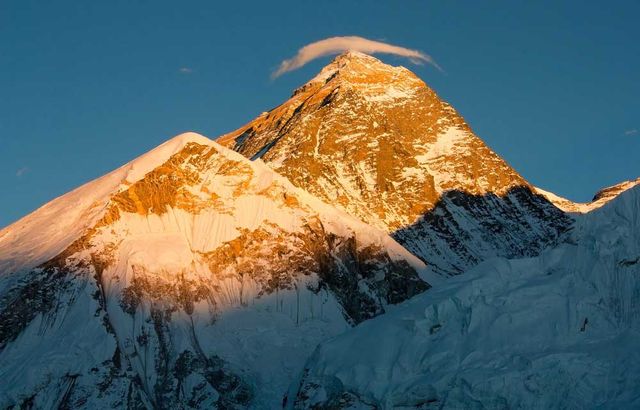
On Thursday, climbing blogger Alan Arnette posted a new analysis of . “Around 225 climbers have died on Everest since 1953 with about 3,700
individuals standing on the summit,” he wrote. “The vast majority of the dead are
still there.”
Arnette compiled his report in response to that he called sensational. He wanted to gather facts and take a deeper look at the reasons why bodies remained on the mountain. His analysis includes a simple chart showing the locations and causes of deaths from 2001 to 2012. He noted 39 deaths on the North Ridge route, 25 on the South Col route, and six deaths on other routes. “That the north side death rate is higher is not a big surprise,” wrote Arnette. “The
north is traditionally considered slightly more dangerous given the
exposure to cold and harsh winds plus the technical nature of the Steps
and exposed rock on the summit ridge.”
The more common causes of death include falls and altitude sicknesses. Those who perish on the mountain remain primarily for logistical reasons.
As to the question of why bodies remain on Everest, it is a matter of
logistical difficulty and further risk. It can take five or even 10 or
more very strong, acclimatized Sherpas to move a body lower from the
extreme altitudes above 8,000 meters. The work is slow and dangerous
exposing the rescuers to altitude, weather, and potential falls. And it
is expensive, costing over USD $30,000 for a full repatriation. If several
years have passed, the body has most likely frozen into the landscape
preventing any form of recovery.
Using helicopters to transport bodies has only recently become
practical. FishTail Air helicopters regularly carried injured climbers
and even deceased ones from Camp 2 at 21,500′ on the south the past few
years. But a body above that altitude must be moved by human power to a
lower position.
There are no helicopters available on the north due to the Chinese
prohibiting the use of helicopters for any reason thus any body must be
moved by human power to ABC then by yak to base camp at 17,000′ and then
moved by a vehicle.
Often friends or guides will return the following year after a death
to provide a respectful “burial” of the dead by moving them off route or
down a steep hillside. Some are moved into a crevasse or covered with
rock or snow if available. However, with climate change, these burials
are proving to be temporary as wind and melting snow reveal the bodies
years or decades later.
Finally, often deaths occur during the harshest of conditions where
everyone is fighting for their lives preventing any form of immediate
rescue. On occasion, climbers have been known to be literally blown off
the upper mountain flanks or ridges never to be found.
It's a short but solid read that offers a brief explanation of where visible bodies are located on the routes and how some climbers and photographers handle their presence.
For a more complete picture of the dead on the world's highest peak, read, “.”
—Joe Spring